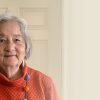Erin Soderberg Downing doesn’t just imagine her characters’ challenges; she often lives them! For her upcoming middle grade novel What Happened Then—which comes out September 2 from Scholastic—that meant writing the first ten chapters while staying on a remote, rugged island. For her adventure-packed novel Just Keep Walking (Scholastic, 2024), she undertook a hundred-mile wilderness hike just like her characters. The result is books that make young readers feel like they’re part of the story’s action while also being immersed in complex family relationships.
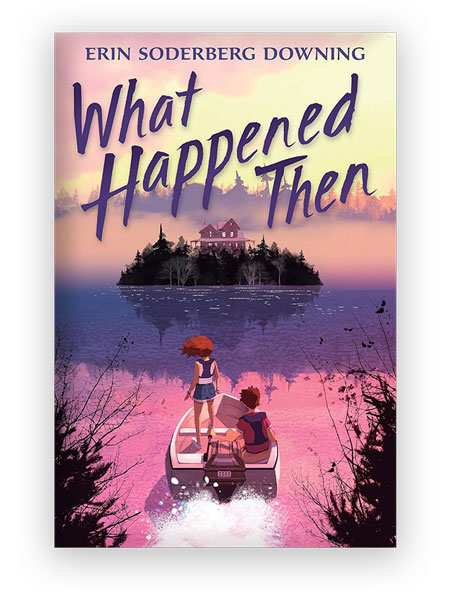
Here, Downing talks about creating her relatable characters, writing stories that foster kindness and empathy, and how books can provide both a needed escape and a way to fit in.
What Happened Then is centered around a big secret, so I don’t want to give too much away before the book is available to readers. What would you like to share about the novel?
At face value, What Happened Then is a mystery set on a remote island that’s full of dark family secrets. It’s a story about two cousins—Jax and Avery—who are forced to spend a summer at their family’s long-abandoned, crumbling island estate, helping to get the place ready to sell. No one has been out to this island for years, not since the summer a kid from their parents’ generation died. It’s a summer no one ever talks about, but when Avery and Jax find pieces of their aunt’s old diary, they learn more about their family’s final summer on the island. They hope that if they can uncover the mystery of what happened, maybe they can glue their broken family back together and help the family start to heal.
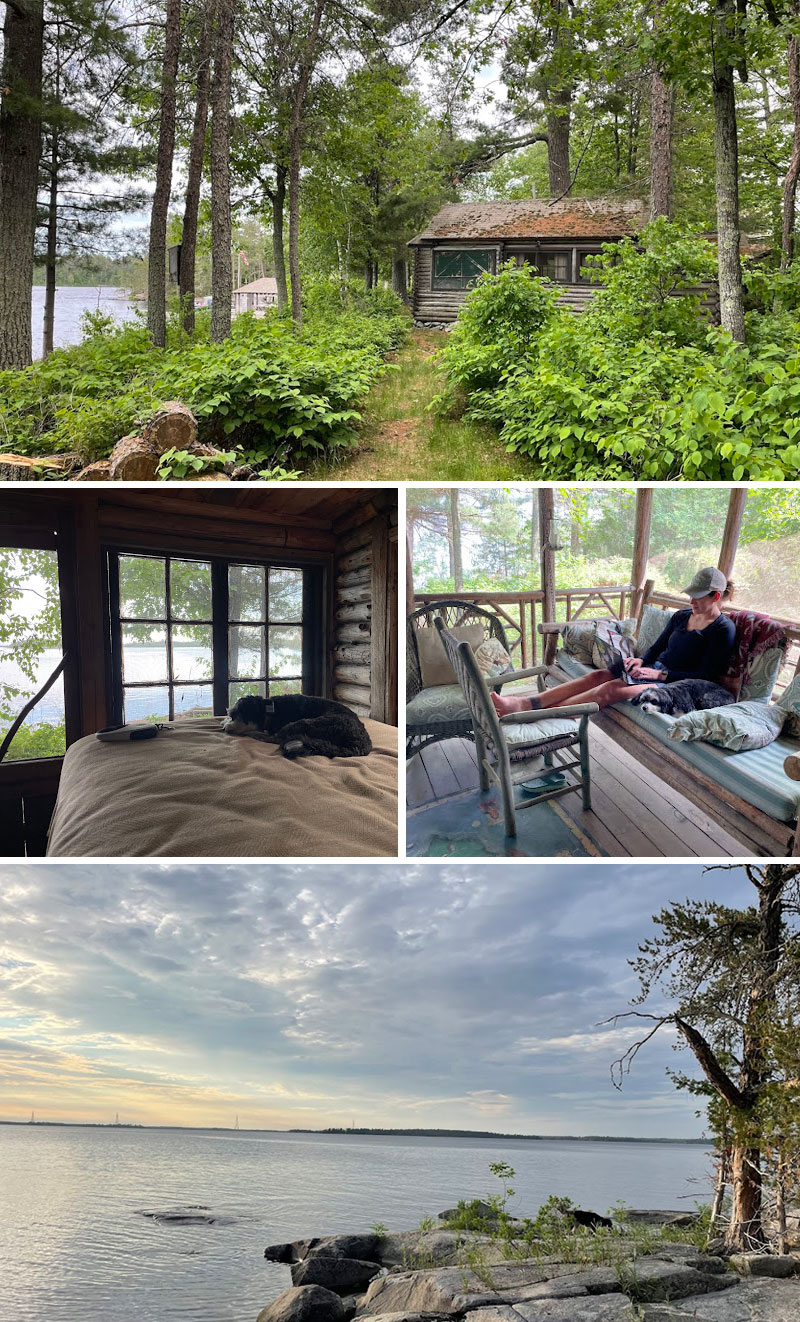
How did you decide to go with a narrative that switches back and forth between characters?
On a deeper level, this book is about family, self-discovery, and how our own opinions of ourselves and the perceptions of others—how they see us, interpret a situation, remember the past—can dramatically shape our life’s experiences. I wrote it in alternating perspectives to help readers understand how differently we all view our surroundings and experiences. Jax and Avery are polar opposites, but they share a similar struggle with self-doubt. Avery believes herself to be too much—too loud, too annoying, too big for the box society expects her to fit into; and Jax believes himself to be not enough of a person to live up to his family’s, and the world’s, expectations.
The best part about the book, other than the characters, is that it has a twist! Who doesn’t love a story with a twist?
Who doesn’t love a story with a twist?”
The thing that struck me as I read several of your titles is how honest the family relationships feel. Your characters and their interactions are flawed, sometimes deeply so, but always real and relatable. How do you accomplish this?
Oh wow, thanks so much! That’s a huge compliment, and exactly what I hope to achieve when I’m writing characters. I dig into my own experiences to build characters, and I put some elements of myself (even the traits I am working on improving!) into my characters to make them feel as realistic and relatable as possible. Because I’m an adult writing from a kid’s perspective, I know how important it is for me not to preach or sugarcoat things—kids are significantly more intuitive than most adults realize. Instead, I try to put myself in my characters’ shoes and understand how they would feel and react in any given situation. The more books I write, the more I realize how similar novel-writing is to performing a part on stage—I need to become my characters in order to understand them as people!
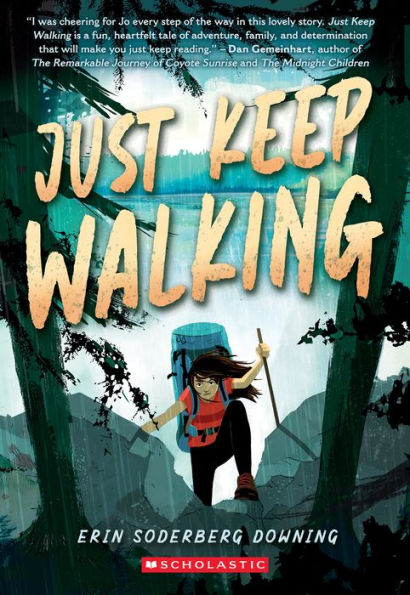
To research your novel Just Keep Walking (Scholastic, 2024), you and your son hiked nearly one hundred miles of the same wilderness trail that you used to challenge your characters. What process do you go through to translate your own experiences into fiction?
When I do hands-on research, I focus on the details—not necessarily the exact events that happen during a day, but rather: How am I feeling? What hurts? What do I smell, see, hear? What am I thinking about when I’m living in the setting of my story? That’s how I used my research hike for Just Keep Walking, and I followed the same guideline for What Happened Then. My goal with research is to build the details of a story and setting enough that readers can imagine themselves in the story and feel like they’re experiencing it themselves through the pages!
When I was writing the first chapters of What Happened Then, I moved myself into a tiny cabin set on an island, so that I could truly sink into the setting of this story and feel the isolation that I wanted to capture for my characters within the pages. Then, when it was time to write the end, I checked into a lonely motel and wrote the scenes that show what happened then because I knew I wanted those chapters and the scenes that followed to feel urgent and intense, and the best way for me to do that was to force myself to think about nothing but the world of the story for a few days while I was finishing up.
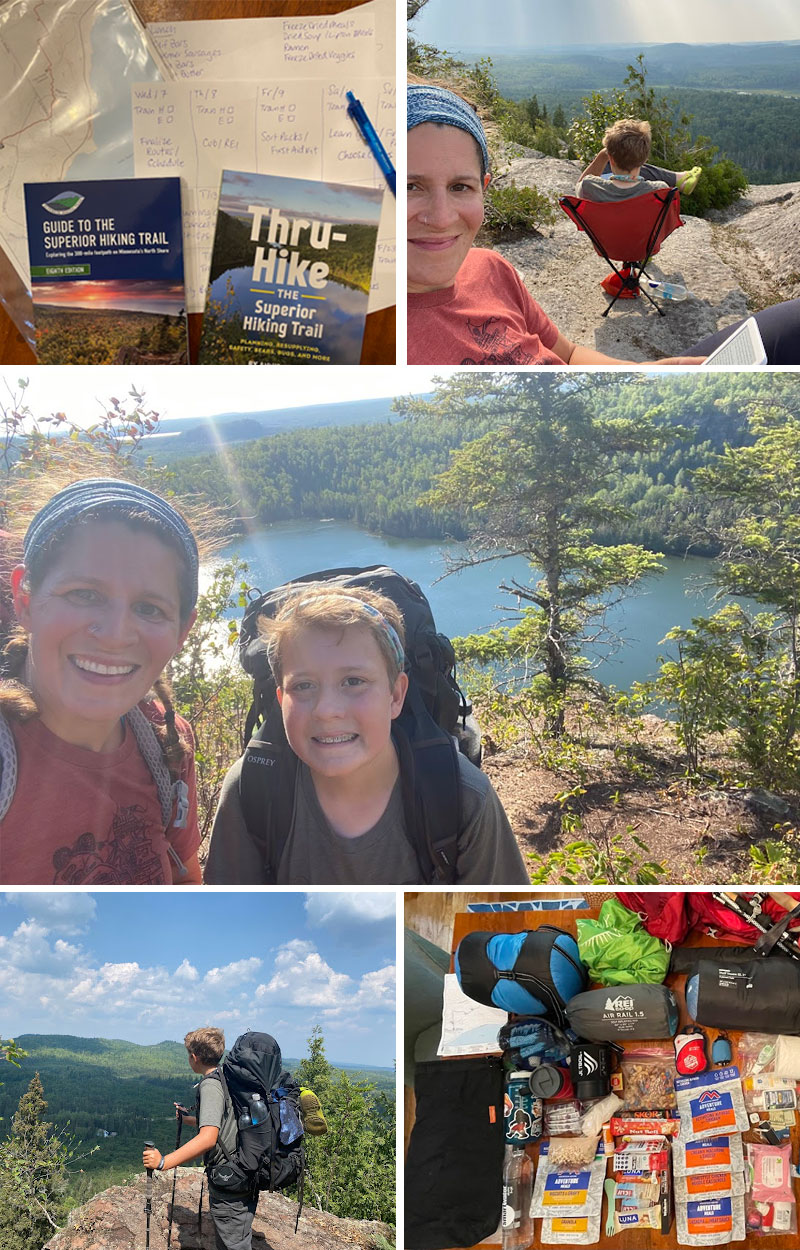
What’s your best advice for young people who have set a personal challenge like your hundred-mile hike?
Sometimes it can be hard to keep going, especially when it feels like everything, or everyone, is working against you. But every time you get through a difficult challenge and realize you survived it, you’ve proven how much you’re capable of … and next time you’re faced with a similar challenge, you know you can handle it!
Every time you get through a difficult challenge and realize you survived it, you’ve proven how much you’re capable of.”
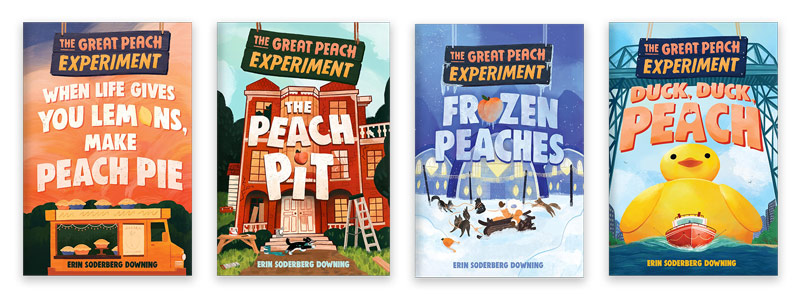
Your stories include lots of suspense, but both What Happened Then and your latest title from The Great Peach Experiment series—Duck, Duck, Peach (Pixel+Ink, 2024)—also have a strong mystery component. What do you enjoy most about mysteries?
I read a lot of Nancy Drew as a kid, and I loved the Baby-sitters Club Super Mysteries so much because I love to be surprised and shocked—but not in real life. In real life, I hate surprises and hate being scared! I prefer surprises that I can turn pages to reveal—like in one of my favorite picture books, The Monster at the End of this Book—rather than surprises that fling themselves at me in real life, forcing me to respond immediately in the moment.
What tips do you have for young readers who want to write a mystery of their own?
My best advice for kids who want to write mysteries is the same advice I’d give to all aspiring writers: READ. Read as much as you can and read like a writer—pay attention to what you love about a story, what you might have done differently if you were telling the story, and read a lot of different kinds of books to figure out how authors build a mystery from beginning to end.
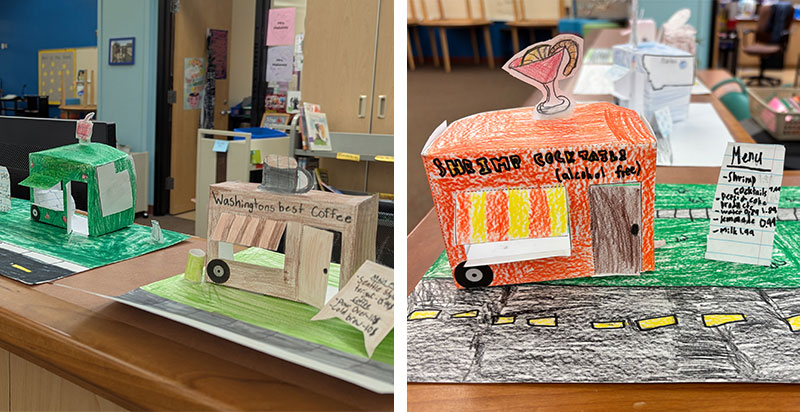
Could you share some of the ways your books have been used in classroom settings?
I’ve seen some truly remarkable projects to accompany my books. Two that have stuck with me: while reading The Great Peach Experiment 1: When Life Gives You Lemons, Make Peach Pie (Pixel+Ink, 2021), each kid in a fourth-grade classroom researched a different U.S. state and then built their own mini food truck celebrating something their state is famous for. At another school, as they read Just Keep Walking aloud in their classrooms, the students “hiked” the whole Superior Hiking Trail during gym class, mapping out each class’s progress on a giant map they drew and decorated in art.
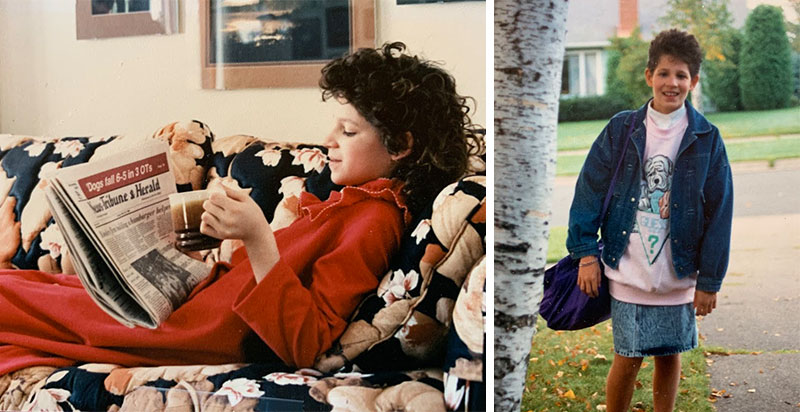
How did your childhood shape you as a writer?
I was a huge reader as a kid and am still a huge reader today. I have always had a very vivid and unique imagination that sometimes made it hard for me to feel like I fit in as a kid, but I’m certain it’s my zany, overactive imagination that makes me a great writer today! When I was younger, it took me a long time to find value in my “weirdness,” and I sometimes felt like I didn’t quite fit in with the rest of the world. But books always gave me a place where I could escape into someone else’s stories and adventures and find characters who reminded me of myself. Now I hope my stories do the same for others!
Books always gave me a place where I could escape into someone else’s stories and adventures and find characters who reminded me of myself. Now I hope my stories do the same for others!”
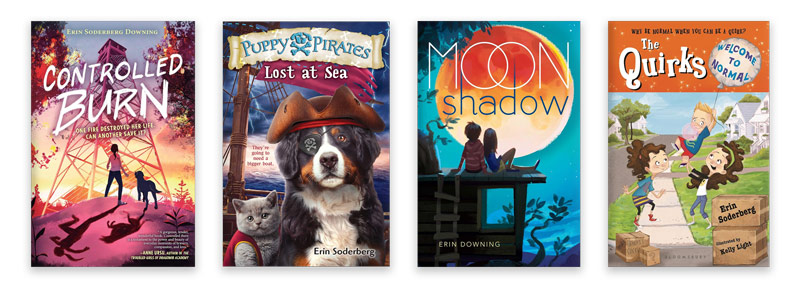
What’s your favorite part of creating books for young readers?
Diving into stories is so important for understanding the world around us, both as a writer and a reader. Exploring the world through the safety of a book’s pages helps to build empathy. Now more than ever, it’s critical for all of us to see others and understand that we don’t always know what’s going on behind the scenes and under the surface of the lives of those around us. I tried to convey this through the characters I wrote in What Happened Then. Books often provide helpful mirrors into readers’ lives and, perhaps even more importantly, windows into others’ lives.
I write stories that I hope help foster kindness and empathy so our younger generation will treat one another with respect based on understanding. You never know when one small gesture—or perhaps the perfect book—can provide a needed escape from reality, a window into a kid’s soul, or a safe physical space to hide out amongst stories in a library, and change the trajectory of someone’s day or life. That’s what I love most about creating stories.
It’s critical for all of us to see others and understand that we don’t always know what’s going on behind the scenes and under the surface of the lives of those around us.”
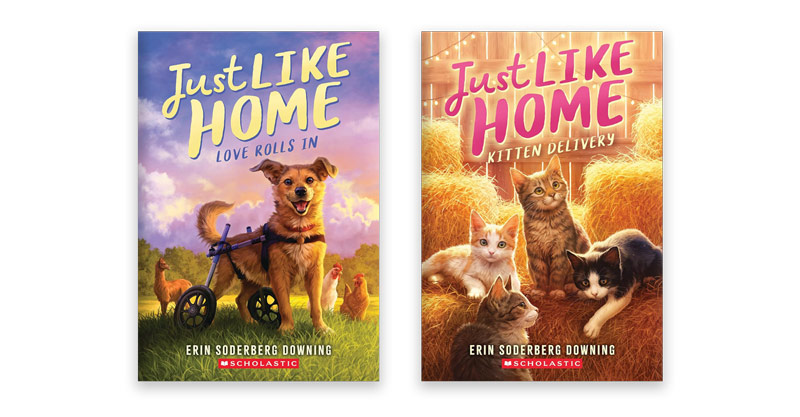
Can you share any details about your other forthcoming books?
I have a new middle grade series coming out in January 2026, from Scholastic called Just Like Home; the first two titles are Love Rolls In and Kitten Delivery. The series is about a unique animal sanctuary and the family—of both human and animal variety—who live there. I am having so much fun researching and writing it!
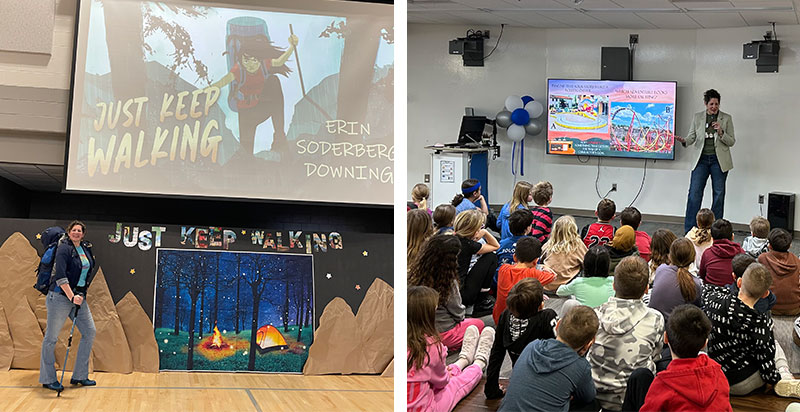
What are the best ways for educators and librarians to connect with you or to follow you on social media?
I love visiting schools to talk about writing and reading, and to share stories and pictures from my research. I work with a wonderful booking partner, How Now Booking, to coordinate those visits; you can visit my website at https://www.erinsoderberg.com/ to find a booking link. I’m also one of the moderators of a group on Facebook called For the Love of Middle Grade, and I post pictures of my dogs, my kids, and the books I’m reading on Instagram (@erinsoderbergdowning).



